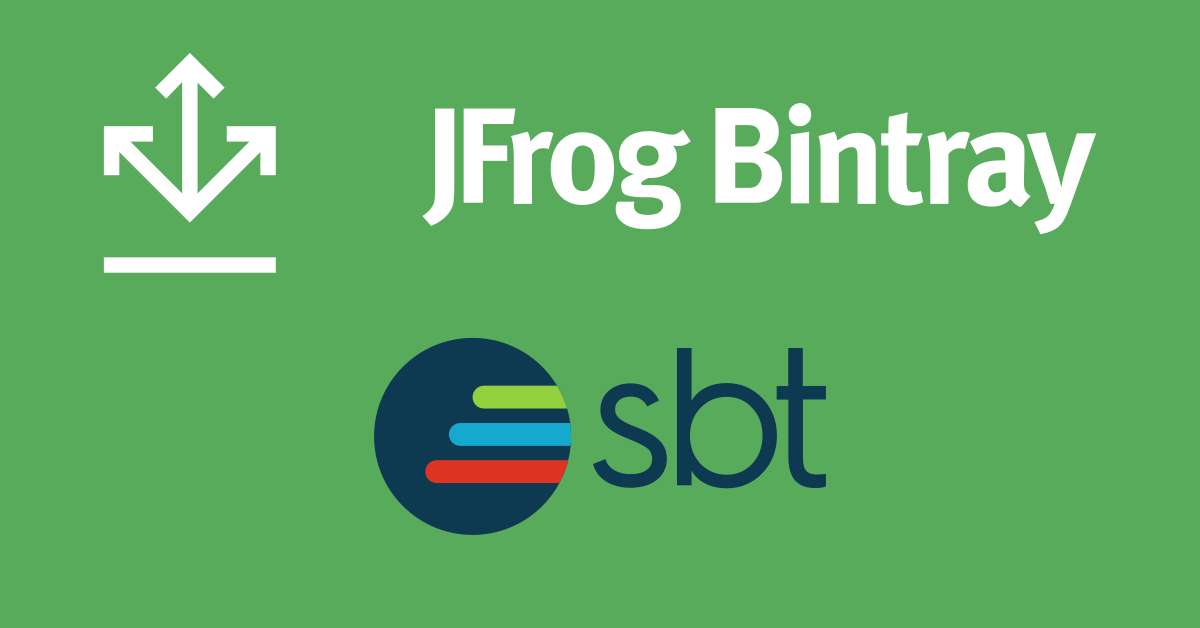
How to sbt + crossScalaVersions + Bintray
Table of content
- Introduction
- Scala Version
- Scala plugins
- Multimodule layout
- crossScalaVersions
- scala-bintray configuration
- scala-release configuration
- Release and publish in one command
- References and resources
Introduction
Several years ago I created a Github project called sbt-multimodule-template, to help me to have a good baseline sbt multi module project to use as a template in my new projects.
I started with simple stuff and then, I needed to create submodules, releases for more than one Scala version, publishing into public Maven repos, etc.
Today, I will update and cover how to release and publish multi-module “cross Scala versions” sbt projects into Bintray, using sbt.
I updated the project to use the last version of sbt and plugins. At the moment of writing this post:
- sbt 1.3.10
- sbt-release 1.0.13
- sbt-bintray 0.5.6
- Scala 2.10.7, 2.11.12, 2.12.11 and 2.13.2
Scala Version
The behavior of sbt-release is not consistence between sbt version, so it is important to set the right version in function
of your built.sbt content. For example, from the www.scala-sbt.org documentation:
sbt-release implemented cross building support by copy-pasting sbt 0.13’s + implementation, so at least as of sbt-release 1.0.10, it does not work correctly with sbt 1.x’s cross building, which was prototyped originally as sbt-doge.
So it is important to double check the sbt version used. In my example, 1.3.10. The content of my project/build.properties:
sbt.version=1.3.10
Scala plugins
In the release and publication process, I will use sbt-release and sbt-bintray. So the content of my project/plugins.sbt file is:
addSbtPlugin("org.foundweekends" % "sbt-bintray" % "0.5.6")
addSbtPlugin("com.github.gseitz" % "sbt-release" % "1.0.13")
Multimodule layout
The project will contain four submodules modules:
core,module1andmodule2will be published.moduleignoredwill be ignored so not published. Therootproject will be not published as well.
.
├── build.sbt
├── core
│ └── src
│ └── main
│ └── scala
│ └── com
│ └── example
│ └── Hello.scala
├── LICENSE.md
├── module1
│ └── src
│ └── main
│ └── scala
│ └── com
│ └── example
│ └── Hello.scala
├── module2
│ └── src
│ └── main
│ └── scala
│ └── com
│ └── example
│ └── Hello.scala
├── moduleignored
│ └── src
│ └── main
│ └── scala
│ └── com
│ └── example
│ └── Hello.scala
├── project
│ ├── build.properties
│ ├── plugins.sbt
│ └── project
├── README.md
└── version.sbt
crossScalaVersions
This will allow to release the same library for different Scala version at the same time.
In the example, I’m using the same subset of scala versions in all projects, but it is possible to specify it per module as well. In my example:
lazy val scala213 = "2.13.2"
lazy val scala212 = "2.12.11"
lazy val scala211 = "2.11.12"
lazy val scala210 = "2.10.7"
lazy val supportedScalaVersions = List(scala213, scala212, scala211, scala210)
crossScalaVersions := supportedScalaVersions // Same set of version in every module.
scala-bintray configuration
For sbt publishing, I will use two configurations, one for publish and another one for don’t publishing:
lazy val disablingPublishingSettings =
Seq(skip in publish := true, publishArtifact := false)
lazy val enablingPublishingSettings = Seq(
publishArtifact := true, // Enable publish
publishMavenStyle := true,
// http://www.scala-sbt.org/0.12.2/docs/Detailed-Topics/Artifacts.html
publishArtifact in Test := false,
// Bintray
bintrayPackageLabels := Seq("scala", "sbt"),
bintrayRepository := "maven",
bintrayVcsUrl := Some("https://github.com/angelcervera/sbt-multimodule-template.git"),
// bintrayReleaseOnPublish := false, To enable staging
// bintrayRelease := false
)
We will import one setting depending on if we want to publish or ignore publication. For example:
lazy val module2 = (project in file("module2"))
.settings(
commonSettings,
enablingPublishingSettings,
name := "submodule2",
description := "Submodule 2 published",
bintrayPackage := "multimodule-submodule-2",
)
lazy val moduleIgnored = (project in file("moduleignored"))
.settings(commonSettings, disablingPublishingSettings)
Other important step is to set your credential. You can do it on different ways:
Using environment variables, Jvm properties or credentials file. In the example, I’m using the last one. The credentials
file is located at ~/.bintray/.credentials and the format is:
realm = Bintray API Realm
host = api.bintray.com
user = <insert-your-username-here>
password = <insert-your-key-here>
scala-release configuration
The root project will define the release process.
We cannot use the default configuration because it doesn’t work in crossScalaVersions projects. The difference is the
in lines 14 and 18, where I force cross scala versions execution for test and publish command with +.
lazy val root = (project in file("."))
.aggregate(core, module1, module2, moduleIgnored)
.settings(
name := "sbt-multimodule-template",
// crossScalaVersions must be set to Nil on the aggregating project
crossScalaVersions := Nil,
publish / skip := true,
// don't use sbt-release's cross facility
releaseCrossBuild := false,
releaseProcess := Seq[ReleaseStep](
checkSnapshotDependencies,
inquireVersions,
runClean,
releaseStepCommandAndRemaining("+test"),
setReleaseVersion,
commitReleaseVersion,
tagRelease,
releaseStepCommandAndRemaining("+publish"),
setNextVersion,
commitNextVersion,
pushChanges
)
)
Other important part is the version.sbt file. Because the sbt-release plugin can not modify the build.sbt file, this
external file stores the current version.
version in ThisBuild := "1.42-SNAPSHOT"
Recommendation: Keep in the master the current SNAPSHOT in development, and a tag per release.
Release and publish in one command
To generate a release, as usual:
sbt release
After the process, we will have:
- new release of the current SNAPSHOT and a new tag. For example, from 1.0-SNAPTSHOT to v1.0
- Increase the current SNAPSHOT
- Generate one artifact per module and Scala version.
- Publish all artifacts in Bintray.